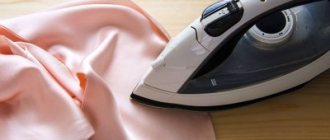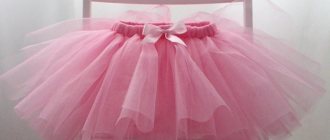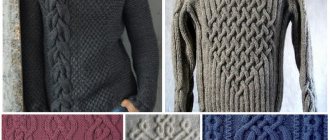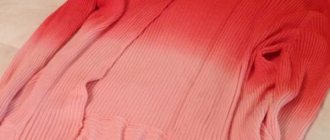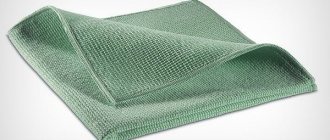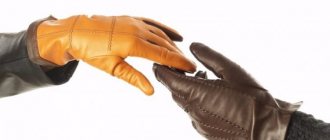Polyester is a very popular synthetic fabric that can come in different thicknesses and textures. It can be similar to silk, wool, cotton or linen fabric. Polyester fabric is used to make various items of clothing: skirts, trousers, T-shirts, blouses, coats, raincoats, sweaters, shirts. Polyester is used to make curtains and furniture upholstery. This material is inexpensive and has high wear resistance. In order not to spoil things, you should follow a number of rules when ironing polyester fabric.
Polyester fabrics have a number of advantages:
- do not shed;
- do not wear out;
- serve for a long time;
- wrinkles badly;
- not damaged by moths;
- resistant to dirt.
Knowing how to iron polyester, you can enjoy your favorite things for a long time.
Drying and ironing polyester clothes
Regardless of how polyester items were washed - in a machine or by hand - clean items must be thoroughly dried and brought into a well-groomed appearance. In general, synthetic clothing dries quickly and wrinkles slightly. That is why, to prevent wrinkles from forming, wet polyester items can simply be hung carefully on hangers. They are usually not ironed (except for items containing natural fibers). If it is still necessary to iron the clothes, they must first be covered with damp gauze or other cloth.
Synthetic fabric melts easily when exposed to high temperatures
It is also important to know at what temperature it is best to iron clothes. The optimal value is about +110 ℃
Remember that at +200 ℃ synthetic fabric fibers begin to melt, so it is better not to heat the iron to this temperature.
Is it possible?
Polyester is a thin but very strong fiber. This is one of the main advantages of the material. Its characteristics are similar to cotton, and its appearance resembles wool .
Considering the fact that most synthetic fabrics do not wrinkle, many women do not know whether to iron polyester or not.
Ironing is necessary for things made of polyester for the reason that during long-term storage, when the product lies folded in a closet for a long time, creases form on the surface of the fabric . This often happens after improper washing or drying.
It is impossible to get rid of them without ironing clothes, and in some cases pre-washing is required.
To make the ironing process easier and faster, you need to properly wash your polyester fiber product:
- the water temperature should not be higher than 40 degrees;
- When washing by machine, you can use manual or delicate mode;
- It is recommended to use liquid detergents; the powder may leave a residue on the fabric, which will turn yellow upon contact with the iron;
- outerwear should be turned inside out, it is better to put it in a washing bag;
- At the end of washing, the item must be removed from the machine and blotted with a terry towel, removing excess moisture.
After washing, outerwear, blouse, T-shirt, shirt or dress should be hung on hangers, fastened and dried in this form.
It is important that direct sunlight does not fall on synthetic fabric, otherwise yellow spots will appear on it. The skirt should be dried flat, hung by the belt or laid out on a flat surface.
When rinsing, it is recommended to add 9% vinegar to the water . It has an antistatic effect on synthetic fabric, so clothes will get dirty less during wear. For 1 liter of water you will need 2 tbsp. l. vinegar.
This is interesting: How to iron things quickly without an iron at home
Advantages of textile curtains
How to properly fill a self-leveling floor: tips and video instructions
Thanks to modern technologies, fabric curtains for the bathroom have acquired properties that are completely uncharacteristic for them. They do not absorb water and effectively protect against its splashing around the room. Fabric bathroom curtains have a number of advantages:
- Variety of appearance. These are not only designs and color palettes, but also textures that polymer film curtains do not have.
- The price of fabric curtains is quite low. It allows you to change products depending on your mood, time of year and other factors.
- Modern technology makes all fabric shower and bath curtains waterproof. They do not allow steam or drops of water to pass through and protect the rest of the bathroom from increasing humidity. This prevents the appearance of mold and other negative consequences.
- Textile bathroom curtains are more pleasant to the touch and do not stick to the body.
- All materials are completely safe, do not emit harmful substances and do not cause allergies.
- It is convenient to use textile products. They are treated with special weighting compounds along the bottom edge, so they hold their shape well and do not stick together.
- There are many options for such products. They come in a variety of styles to suit the needs of any customer.
- Caring for such curtains is extremely simple. They are washed in a washing machine and dried flat. They can dry directly at their “workplace”, i.e. on the bar above the bathtub. Some curtains can be ironed on low heat.
Cons of textile options
There are very few disadvantages to fabric curtains for the bathroom. First of all, they include the need for drying. Moisture should not linger on the surface, otherwise there is a risk of mold growth.
When the water procedures are completed, you must wait until the water drains from the surface. Then the curtain must be pulled apart and straightened so that it dries well.
To prevent mold from appearing on the curtain, it needs to be washed quite often. However, frequent washing gradually leads to damage to the moisture-repellent layer. The curtain loses its characteristics.
To reduce all these negative consequences, high-quality ventilation must be created in the bathroom.
Correct ironing
Painting fiberglass web application and step-by-step instructions - Tips Video
How to iron polyester correctly:
- The label contains the necessary information on caring for the product. First you need to study it carefully. It indicates whether this type of fabric can be ironed and at what temperature.
- Before the process, the item is soaked in cold water and gently wrung out. Wait until the water drains and the material dries a little.
- Most synthetic products have an extra piece of fabric. They try different iron modes on it. The ironing temperature for polyester products is 60-80 degrees. This is the “silk” mode on the iron. Steam cannot be used. The cotton/polyester blend can be ironed at 110 degrees. It is allowed to turn on the steam mode. A mixture of polyester and viscose allows temperatures of 150 degrees.
- Clothes are ironed from the inside out. To prevent the threads from being damaged or deformed, they are ironed through a piece of damp cotton cloth or gauze.
- If ironing from the inside out fails, ironing from the outside is allowed. You cannot do without gauze or cloth; the process itself must be careful. You can't put too much pressure on a thing.
- Heavily wrinkled parts of clothing and large creases are ironed at elevated temperatures. Before doing this, check on an inconspicuous area of the fabric so as not to spoil the item.
At the end of the process, the clothes are not put away in the closet. It is hung on hangers and left to dry. The thing will hang and take the required shape in a couple of hours.
How to iron a polyester jacket without ruining it:
- start the process with the lining;
- movements are smooth, without strong pressure;
- It is recommended to use damp gauze or a cotton towel.
Useful
Ironing polyester outerwear should only be done in case of urgent need. If there are no large folds, it is recommended to leave it as is.
You should iron a skirt or dress with pleats or pleats as follows:
- small pins are used to fasten the folds;
- connect the side and front seams;
- iron the product.
This is done carefully; if the folds are small, use the tip of the iron. Otherwise, the item will wrinkle more.
Steaming
If you have a steamer, the process of straightening a synthetic item becomes easier and safer. It’s easy to smooth polyester with steam:
- Hang the product on hangers. Set the steam generator to delicate mode.
- The device is held a few centimeters from the material. Movements should be from top to bottom.
- They pass along the back of the product, then process the sleeves and shoulders. Then the front half, at the end the collar.
Steam not only smoothes, but removes unpleasant odors, refreshes and renews the fabric.
Traditional steaming method
What to do:
- hang the fabric on hangers, fasten all the buttons;
- secure hangers over the bathtub;
- straighten the material with wet hands;
- turn on the hot water tap, close the bathroom door tightly, and leave for a quarter of an hour;
- During this time, the steam will rid the item of wrinkles.
The straight clothes are taken into the room and left on hangers until dry.
Important
If you are not sure that you will be able to iron the polyester yourself, you should entrust the job to professionals. Laundry and dry cleaning will do this quickly and inexpensively.
There is no clear answer to the question whether polyester can be ironed. You can find out for sure about this by studying the label. If everything is done correctly, synthetic clothing will delight you with its novelty and freshness for a long time.
2019 textiletrend.ru
How to smooth it with a steamer?
It is much easier to iron a polyester product if you have a steamer at home with adjustable steam mode.
Using this fabric treatment, you can not only smooth out synthetic fabric, but also remove dirt from it and get rid of unpleasant odors.
The ironing process itself does not require special knowledge or special effort from the housewife; it is enough to adhere to the following rules :
Before ironing in this way, hang the polyester product on hangers and set the device to the delicate steam mode.- You should start processing the fabric from the back, moving the steamer from the top of the clothing to the bottom.
- Then they begin to smooth the sleeves, shoulders and front part of the product.
- The collar is smoothed last.
When smoothing polyester with steam, the steam generator must be kept at a distance of 3-5 centimeters from the fabric.
How to care for polyester
Shelves around the window
Another distinctive feature of polyester is its easy care. There are only two things this artificial material does not like - hot water and a hot iron.
The water temperature when washing should be less than 40°C, and polyester curtains can be ironed at a temperature not exceeding 130°C.
Wash
Plain water and detergents without bleaches are suitable for caring for curtains. Polyester is a man-made material, so aggressive chemicals can damage it. Curtains can be washed by hand or in a machine when selecting the delicate cycle. The main thing is not to fill with hot water! It will cause the fabric to become covered with creases that will no longer be possible to straighten.
If a greasy stain appears on a kitchen curtain, rub dishwashing detergent into it, let it sit for 10-15 minutes, but without drying, and then rinse with water. You can use special stain removers for synthetic fabrics.
If you need to wash a polyester bathroom curtain, it is better to do it as follows:
- Study the labeling! If you can add stain removers, then be sure to do so.
- After washing, soak the product in salt water - take 1 tablespoon per liter of water
- Hang on the rings and let the curtain dry naturally
The saline solution will protect the bathroom curtain from soap stains.
Wash
Drying and ironing
Since polyester fabric for curtains does not tolerate heat, it should be dried in the open air away from heating devices
Use a special drying machine with caution, knowing exactly the temperature programs
When ironing, the iron does not heat up above 130°C. This temperature corresponds to synthetic fabrics and is usually indicated by one point. There is no need to press hard on the material.
httpv://www.youtube.com/watch?v=h4xa2ZXqqN8
Steaming a jacket at home
A steam generator or an iron with a vertical steam option will help you iron your jacket contactlessly, from a distance of 1-3 cm. Steam treatment will also help rid the item of stains and eliminate unpleasant odors. This simple and tissue-friendly procedure includes several steps:
- clothes are placed on hangers;
- select a mode for delicate fabrics on a household appliance (steam generator, iron);
- holding the steamer at a distance of 1-3 cm, begin the procedure, moving from top to bottom;
- First, the back is steamed, then the shoulder area and sleeves, and lastly the front and collar area.
If the “steam treatment” option is not available, you can use a trick. The jacket should be placed on hangers, zippers and buttons should be fastened. Next, wet your hands and smooth the fabric well with your palms. In the bathroom, turn on very hot water and, with the doors closed, wait until the atmosphere in it becomes like a sauna. Take the jacket to the bathroom on a hanger and leave it for a sufficient period of time under the influence of steam. Then dry naturally. The effect will be equivalent to ironing the product.
Basic principles for washing polyester fiber products
Any synthetic materials, despite their strength, can become hopelessly damaged if handled improperly. In order to avoid such troubles, you need to follow the recommendations for caring for them:
Polyester clothing should not be boiled or washed in hot water. The optimal temperature for this type of fabric is +20…40 ℃
The fact is that many synthetic items can easily shrink when exposed to high temperatures, and light-colored clothes can also lose their color irrevocably. To remove deep stains, stain removers must be used with caution. Manufacturers recommend first testing aggressive household chemicals on a small area of fabric, closer to the seams, and only then applying it to stubborn stains.
The use of any bleaches is strictly contraindicated! You should always carefully study the labels on clothes. Typically, manufacturers indicate in detail the recommended washing and ironing temperatures that are optimal for each product, as well as other important nuances for caring for them. When washing clothes made of low-quality fabric, you should add a little conditioner to the rinse water - this will prevent things from becoming electrified and sticking to the body after drying. You need to be very careful when drying polyester items in direct sunlight or on hot radiators. As a rule, synthetic fabrics dry quite quickly, even indoors. But the quality of fabric that has been dried at high temperatures may noticeably decrease.
Recommendations for caring for the material
Polyester is a fairly durable material, despite the fact that it is quite thin. In its properties it resembles cotton fabric, and in appearance it is similar to wool. At the same time, polyester is so versatile that it even allows you to make an item with an imitation of real suede, however, the cost of this kind of product will be cheaper than items made from natural suede.
Another big advantage is that it practically does not wrinkle, unlike natural fabrics. The question will probably arise as to why pet him at all. The thing is that when stored folded for a long time or transported, items made of polyester, due to its coarse fibers, develop wrinkles, which are often very difficult to smooth out. You can solve the problem of difficult ironing in the following way: wash the item and dry it properly, then even a heavily wrinkled item can be easily straightened out.
Curtains and tulle curtains made of synthetics
In the last couple of years there has been a lot of interest in synthetic materials in the production of curtains. This is not surprising, since such products are more airy and have an original structure.
Naturally, problems may arise here when ironing the fabric, and we will try to tell you in detail how to quickly iron large-sized tulle so as to maintain the appearance of the curtains at a high level.
Important Tips:
- It is advisable to iron products immediately after washing, when the fabric is damp. Try not to use a spray bottle as fine droplets of water may cause streaks on the fabric once it dries.
- If you are working with viscose, you can use the steaming function, but it is better to iron from the inside out.
- Silk is ironed on either side, placing paper under the iron in advance.
The main rule: do not turn on the maximum temperature mode when working with synthetic products (no more than 120 °) so that the fabric does not change color.
Also, try to use an intermediate material between the curtain and the iron when ironing. This will prevent dark yellow marks from appearing on the curtains.
What is the fabric made of?
Polyester, or polyester fiber, is a synthetic thread formed by melting thermoplastic or other polymer derivatives. In simple terms, polyester is a man-made fiber that is often used in light industry. The material can be either a translucent veil or a thick cloak. The appearance depends on the chemical composition of the raw material, the type of fiber and the method of weaving.
Typically, polyester looks like wool, but has characteristics similar to cotton. The fabric is pleasant, smooth to the touch, light.
The combination of fibers in the structure is resistant to various weather conditions. Products do not deteriorate when exposed to ultraviolet rays, heavy rain or frost. The material goes well with natural fibers.
How to iron tulle field washing basic methods
Delicate, airy, obedient to the breeze - this is how thin tulle curtains can be described. How to iron tulle after washing without damaging the delicate fabric? It’s scary to even touch an iron, but crumpled curtains also make the room sloppy and “sad.”
Tulle. A little history
Delicate thin fabric began to be produced back in the Middle Ages in France. Tulle was used to decorate women's dresses, collars, and made canopies for beds. But only rich houses could afford such window decorations.
Cotton, natural silk, and flax fibers collected at the initial stage of flowering were used as raw materials for the production of linen. With this approach, thin and delicate threads are obtained from flax.
Currently, tulle made from natural fabric is very difficult and expensive to purchase. Synthetic or artificial fibers are used as the starting material for sewing curtains. In our homes we hang polyester or organza tulle.
How to starch tulle?
In Soviet encyclopedias, housewives were advised not only to wash linens and curtains, but also to starch them. The fabric became stiffer and became less dirty. Well, starched linen was considered almost a sign of a good housewife.
How to starch tulle made from modern materials and is it worth doing? If you have curtains made of natural fibers, then perhaps this step should be included in the process of caring for window dressings. Polyester or organza themselves hold their shape well and do not require additional care methods.
But if you want to starch the fabric, then why not. There are 2 methods of processing tulle - using classic starch paste and using table salt.
- Dissolve two tablespoons of potato starch in 1 glass of water. Brew the resulting mixture in 0.5 liters of boiling water. You should get a uniform transparent substance. Dissolve the paste in rinsing water. Soak the panels for 15 minutes. Gently squeeze out the water and dry flat. Iron the tulle while the fabric is still slightly damp.
- A strong solution of table salt. For 1 liter of water you will need 2 tbsp. l. salt. It is advisable to use the “Extra” grade, as it does not contain impurities. Rinse the fabric after washing in a saline solution and dry flat.
Cotton or linen tulle
- It is better not to wring out such fabrics after washing, as it will be difficult to smooth them out.
- It is best to hang a slightly damp cloth on a curtain rod. Under the influence of gravity, the curtain itself will smooth out. If you decide to use an iron, you need to iron a slightly damp cloth. The optimal temperature is 100 degrees.
- To avoid damaging the fabric structure, it is recommended to iron the curtain from the wrong side through gauze.
Synthetic tulle
- Such curtains will not straighten out under their own weight: synthetic threads straighten only under the influence of temperature.
- Iron only slightly damp tulle after washing. The optimal temperature is 110–120 degrees.
- Start ironing with a small area. This will help you avoid trouble and choose the right temperature.
- Iron on reverse side only. Preferably through damp gauze.
Organza curtains
Although this is an unpretentious fabric, it is quite difficult to iron organza curtains
In this case it will not work quickly. Pay attention to the soleplate of the iron. It should be clean, without chips or adhering particles. You can only iron completely dry organza through tissue paper. It is prohibited to use the "steam" function
The fabric may ripple.
For any type of fabric, scrupulousness and accuracy are important.
Otherwise, your curtains will not last long.
How to iron curtains without removing them?
The answer is simple - no way! After all, before ironing the tulle, you need to wash it! So you still have to remove it.
But ironing washed fabric on a curtain rod is quite possible. To do this, you will need a steamer or steam generator. If you do not have such a mechanism, then there are companies that rent such equipment.
Fill the reservoir with water, turn on the steam generator and begin the ironing process. Walk over the cloth 1-2 times. If the fabric is not completely smoothed out in 1 pass, then process the tulle several more times. It's fast, easy and even, one might say, pleasant. In this way, you can iron curtains made of any fabric - cotton, silk, organza, polyester - without removing them from the curtain rod.
Whatever household appliance you use - an iron or a steam generator - it is important not to rush and not make sudden movements. Otherwise, you risk spoiling the delicate and weightless beauty
That's all the secrets on how to iron tulle curtains - you can safely start spring cleaning!
Storage rules
If stored correctly, you won’t have to think about how to iron polyester. Each time after wearing, items should be placed on a hanger with suitable hangers. For long-term storage, they should be pre-washed (or dry-cleaned). Clean items should be zipped up and covered with jacket covers. It is not recommended to store it in folded form or vacuum packaging for a long time. This can be done with the permission of the manufacturer, because he is well aware of the properties of the fabrics from which the item is made.
How to iron thin expensive tulle
Inexperienced people are afraid to iron such items because they are made from non-standard lightweight fabrics that can easily be damaged by incorrect temperatures. Some of them cannot be ironed at all. You can iron tulle in several ways:
- using an iron;
- hang wet tulle on the cornice for two or three days;
- steam with a special steam generator.
Each remedy mentioned above cannot be called difficult to implement. The method you choose will depend on your goal. If you need freshly ironed tulle as soon as possible, it is advisable to use a steamer or iron. If the deadline is not important to you, but you want to get rid of this task as quickly as possible, the second method is best suited. To iron tulle using the traditional method, you need to keep a few tips in mind. Select the lowest iron temperature. Iron from the wrong side - this product will help you avoid ruining the front side. Lightly moisten the fabric with a spray bottle and take your time with ironing. Place a damp cloth between the iron and the tulle for a steaming effect. If possible, you can quickly steam the tulle with a steam generator. To do this, you need to hang it vertically and just use this device. This method is the most effective, but not everyone has a steamer. To avoid the hassle of ironing and free yourself up some time, simply hang the slightly wrung-out tulle on the curtain rod after washing and wait two or three days. The fabric will straighten out under its own weight and will look like it has been freshly ironed.
The steam generator allows you to iron tulle quickly and easily
How to iron tulle made from different fabrics
Different fabrics require different conditions to smooth out. For example, steaming organza tulle will not give the desired results. The difference in fabrics lies in the chemical structure and structure of the fibers, so they cannot be ironed in the same way. A lot also depends on washing. For example, experienced housewives do not recommend squeezing natural fabrics after washing. The explanation is that silk, cotton, linen and other similar fabrics wrinkle a lot and are difficult to iron using an iron.
Place either a sheet of paper or a dry cloth between the iron and the fabric. Only a not very experienced housewife will decide that any product is suitable for ironing tulle.
You can iron tulle correctly only if you know what material it is made of. It’s not difficult; there are now hundreds of descriptions of all the fabrics in the world on the Internet. If you decided that ironing a thing after washing is a thing of the past and it is not necessary to do so now, you are mistaken. After completing the described procedures, you will be pleased to look at the neat, even tulle, and you can rightfully be considered a business person. Don't neglect ironing after washing, and your tulle will always breathe freshness. The main thing is to listen to wise advice and not despair in difficult situations.
Material properties
Polyester is a component of many fabrics and gives them many advantages. The advantages of synthetic material include low cost, resistance to deformation during washing and color fastness. In addition, products made from polyester are not prone to abrasion, do not fade or shrink, are easily washed from dirt and dry fairly quickly.
The fabric is light in weight, uninteresting to moths, and has low wrinkleability.
The disadvantages of the material include poor ventilation and low hygroscopicity , which is due to the coarse structure of the fibers of synthetic fabrics. Polyester is actively used for sewing bedding, curtains, bedspreads, windbreakers, dresses, blouses and outerwear.
Despite the low creaseability of the material, you still have to iron things made of polyester. Synthetic fabrics in general are very demanding on temperature conditions, and polyester is no exception. This causes certain difficulties when ironing and forces you to be more careful when choosing the temperature. However, in some cases, the ironing procedure can be avoided altogether. We are talking about proper washing and subsequent drying of products, the proper execution of which will allow you to avoid using the iron.
To wash a polyester product according to all the rules, you must not use water at a temperature above 40 degrees , do not add bleaches, and soak only light-colored items.
Machine washing should be done on a delicate cycle, and it is recommended to spin items at low speed.
Instead of powder, it is preferable to use liquid products. This will eliminate the possibility of an unsightly plaque that may turn yellow during ironing. When machine washing large items, such as a jacket, coat or down jacket, it is recommended to place them in the drum one at a time. Otherwise, the products will fill the entire working volume of the machine, will not stretch and will become very wrinkled.
All outer clothing should be turned inside out and placed in protective bags. If the jacket is heavily soiled on the sleeves and collar, it is recommended to remove the stains with a brush before placing them in the drum.
You also need to take into account that polyester products are highly electrified. Therefore, it is recommended to add small amounts of antistatic agent to the water during rinsing.
After the clothes are washed, they are removed from the machine, blotted with a dry towel, shaken and hung on hangers. Polyester skirts should be hung up to dry, while jackets and coats should be hung closed. It is recommended to dry the products away from heating devices, periodically straightening folds and creases with your hands.
If it becomes obvious that some places will not be able to straighten out, then you should not wait for complete drying. In this case, you need to smooth out the wrinkled area with wet hands and put it under the iron.
Application
Bed linen is often made from polyester, but I read quite a lot of reviews about it - all without enthusiasm. Mostly they complain that such underwear does not absorb sweat well, it is uncomfortable to sleep, and some people develop allergies.
They sew tablecloths, curtains, draperies, upholstery for upholstered furniture, even carpets.
The most common types of clothing are suits, jackets, and underwear.
A popular ratio with wool is 55% wool and 45% polyester. This option is often used when sewing trousers, skirts, and jackets.
Together with wool, it ranks second (after cotton) for making socks. This is explained by the fact that such socks are very cheap. But this is probably their only advantage. There are many more disadvantages - such socks barely allow air to pass through, your feet sweat in them, and they retain heat very poorly. In general, the same lack of hygiene that I mentioned above.
However, pure polyester socks are almost never seen. It is much more common to see 80% cotton and 20% polyester on the label. This is the most successful combination that you can safely buy. Such things will not stretch and lose shape.
Often used for sewing jackets. Can be used as a filler for warm clothes along with padding polyester and holofiber. Here, for example, is what I saw on the label of my favorite coat:
In combination with a membrane fabric, it is very popular among athletes for sewing sports suits, swimsuits, and hiking equipment.
Features of care
Polyester curtains have long been popular with many housewives, as evidenced by consumer reviews. This material is practical, durable, and excellent in appearance. To preserve these qualities, it is recommended to adhere to the following rules for caring for synthetic products:
- Do not wash in water whose temperature exceeds 40C.
- If necessary, iron the product, use the “silk” mode on the iron and a damp cloth.
- Dryers should absolutely not be used to dry polyester curtains.
- Several times a month, synthetic products should be ventilated by opening a window and allowing the curtains to flutter in the draft for several hours.
- Once a week, the curtains need to be cleaned with a vacuum cleaner. This will prevent dust particles from eating into the canvas.
- To prevent dust accumulated on the curtain rod from settling on the curtain, it should also be cleaned of dust.
Tips and prohibitions
Despite the ease of caring for polyester, it is advisable to follow some tips from experienced housewives :
You can iron a polyester product only through a damp cotton cloth.- Polyester deteriorates when exposed to high temperatures, the fabric wrinkles and even melts. For this reason, it is forbidden to dry it on heating devices and iron it at high temperatures.
- Before ironing, it is recommended to conduct an experiment to select the optimal temperature regime, affecting an inconspicuous area of clothing.
It is not necessary to wash the item before ironing. It is enough to rinse it in cool water and start ironing when the product is still slightly damp.
It is important to know the prohibitions when ironing polyester. Following simple rules will allow you to maintain the new appearance of the product even after long-term use:
- It is forbidden to iron the material with an iron set to a high temperature;
- It is forbidden to press the iron hard on the fabric and hold it for a long time in one area.
How to wash tulle correctly, basic recommendations
It is not recommended to wash tulle more than once every three months, otherwise the product will not become crystal white, as when purchased, but gray. Now we will give basic tips for washing tulle that you should definitely follow. This will keep the product in its original form.
Recommendations:
- Before washing, it is advisable to soak the tulle for several hours in warm soapy water, and also add 1 tablespoon of soda and salt to the water, which will help remove dark stains faster. Depending on the contamination, the water can be changed several times.
After soaking, we begin to wash the product. To do this, we need a large basin, where we pour water up to 50 degrees Celsius and add a little powder. Slightly squeezing the fabric, lift and lower the product into the water several times
Important: do not rub the edges of the tulle against each other, as there is a high probability of ruining the appearance of the curtains. Rinse the tulle several times in cold and warm water
It is not recommended to wring out the product, as this may lead to deformation. After finishing washing, hang the curtains in a damp state on the curtain rod in a straightened form. After drying, the products will be smooth, and therefore there is no need to iron in this case. If you notice that there are folds on them, the curtains need to be ironed. To do this, wrap the still damp tulle in any cotton fabric and iron it. The main thing is that the iron temperature does not exceed 120 degrees - at high temperatures, yellow spots may form on the fabric.
If this happens, don’t be upset and immediately run to the store for a new product. You can try to repaint the tulle in a different color. To do this, you should purchase a special fabric dye, which can be found at any hardware store. We have given you basic recommendations for washing delicate items such as curtains. Now we will try to figure out whether it is possible to iron tulle and how to carry out this work with various materials.
Washing rules
As mentioned earlier, before you do anything with your favorite clothes, you need to study the label and the information on it. Typically the label will show a bowl at the recommended temperature. If there is an image of a hand above it, then the item should be washed only by hand, however, large jackets and coats are still better washed in a washing machine.
Rules to follow:
- Polyester items can be washed at a water temperature of no higher than 40 degrees. This is explained by the physical properties of the material, because at high temperatures it loses color and shape.
- Fabric items can only be washed with light-colored clothing.
Important! When washing polyester clothing, the use of bleach is prohibited.
- Before sending items for washing, you need to turn them inside out and check the contents of the pockets. On the washing machine, you need to select a delicate or manual wash mode and the temperature indicated on the label.
- When washing winter clothes filled with padding polyester, you need to add special detergents for gentle washing, for example, “Vorsinka” or “Laska”.
- If feather or down is used as insulation, then you can wash things only with the addition of liquid detergents, since powder is more difficult to remove.
- When washing a polyester jacket, you need to turn on a double rinse and spin at minimum speed.
- You can make your outerwear less vulnerable to stains by adding an antistatic agent during the second rinse.
- Washing conditioner will help maintain the volume of your jacket.
- It is best to wash a down jacket separately, as the insulation can swell and the item will take up all the free space in the drum.
- For hand washing, you can take a warm bath and add detergent to it. For brightly colored items, you will need to use special synthetic products.
- Clothing made of polyester does not need pre-soaking and reacts negatively to it. When removing dirt, simply rub it with a coarse brush.
Important! Before you put your jacket in the wash, you need to fasten all the zippers and buttons. If possible, it is better to pack the jacket in a special laundry bag or piece of gauze.
Methods for processing tulle
Various materials are used to make tulle: synthetics, linen, organza, cotton and silk.
Synthetic fabrics
Synthetic fabrics are ironed immediately after washing, without waiting for complete drying.
If the curtain has managed to dry out, you should moisten it with a spray bottle carefully, as water stains may remain. After setting the heating mode of the iron, try to smooth out an inconspicuous area to make sure that the selected temperature is correct.
Direct contact of the material with a hot iron can lead to the formation of streaks and even burnt holes, so the area to be treated is covered with a damp cotton cloth or a sheet of parchment paper. It is better to iron viscose using the steam function to prevent it from yellowing. Silk can be ironed not only from the reverse side, but also from the front side.
Linen and cotton products
Tulle curtains made from natural fibers do not wrinkle much even in the washing machine. Therefore, experienced housewives immediately after washing, without spinning, hang the curtains in place. Under the influence of their own weight, the curtains straighten and after drying take on their original appearance. In order not to spoil the floor covered with laminate or parquet by flowing water, it is covered with something.
Heavily wrinkled curtains are ironed with an iron at a temperature of no more than 100 ⁰C, covered with damp gauze.
Organza curtains
Synthetic and natural fibers are used to make organza, but it is ironed only when dry. Treating damp fabric with even a not very hot iron leads to the formation of wrinkles. If such an incident occurs, you need to wet the damaged area with water and wait until it dries. You should not try to stretch the material, as this will lead to loss of shape.
In order not to ruin the product, you need to know the rules on how to iron organza after washing:
- organza should not be hung out to dry with a bend over a rope, since after removal the resulting mark is very difficult to smooth out;
- processing is carried out with an iron with a perfectly flat and clean sole, set to the minimum temperature;
- paper is used as a lining, but not gauze, after which an imprint of its fibers remains on the product;
- first, decorative elements (embroidery, flounces, drapery) are smoothed with the tip of the iron;
- the tulle is smoothed from the edges to the center;
- To avoid streaks and creases, the iron should move in one direction.
Smoothing without iron
These rules also apply to silk tulles. The smoothing process is long and laborious, so you need to be patient, since there is no way to quickly iron organza tulle. Attempts to speed up the procedure by increasing the temperature or holding the iron in one place will lead to irreversible damage to the product.
Organza fabric can be ironed without ironing. If it is made from natural materials and dried outside, it is likely that you will not have to iron the tulle. The wrinkled product is smoothed out using a vertical steam generator. To do this, washed and dried tulle is hung on a curtain rod. Then the steam generator is passed from top to bottom without delays in one place. If the result is unsatisfactory, the procedure is repeated after the curtain has dried. Smoothing will speed up if table salt was added to the water during rinsing (2 tbsp/10 l). It is imperative to ensure that the crystals are completely dissolved, otherwise they will settle on the fibers.
You can avoid ironing if you hang the curtain in place immediately after washing. This method is used if organza is made from natural fibers. This method is not applicable to synthetic fabrics. For complete straightening, 2 - 3 days are enough. If after this not all the folds have straightened, then the remaining ones should be wetted with a spray bottle and left to dry.
Is it possible to do without electrical appliances?
One of the features of fabrics made from polyester fibers is that they wrinkle poorly. If the product is carefully washed and dried properly, most likely ironing will not be required at all. But with prolonged or careless storage, creases may form on these fabrics that require smoothing. It will not be easy to iron a heavily wrinkled item with an iron; it is better to resort to another method. This method of removing wrinkles is also suitable for those synthetic fabrics that cannot be ironed.
A few tips on how to iron out synthetic fabric without an iron or steamer:
- after washing, the clothes should be straightened by holding the top of the item and shaken;
- carefully hang the clothes on hangers or on the dryer in a straightened form, fasten all fasteners;
- leave in this position until completely dry.
If you do not follow the conditions for washing and drying clothes indicated above, the dried items will turn out to be very wrinkled. How to unravel polyester in this case? There is the following method for this. The bath or basin is filled with hot water. Clothes are hung on hangers and all fasteners are fastened. Leave to “steam” indoors for 20–30 minutes, it may take longer if the folds have not straightened out during this time. During this time, the fabric will be saturated with moisture and folds and creases will be smoothed out. Steamed clothes should be moved to a dry room to dry. Do not hang clothes on or very close to heating appliances.
Strong creases should be straightened out during the drying process; the product can be shaken from time to time so that strong creases are straightened out.


